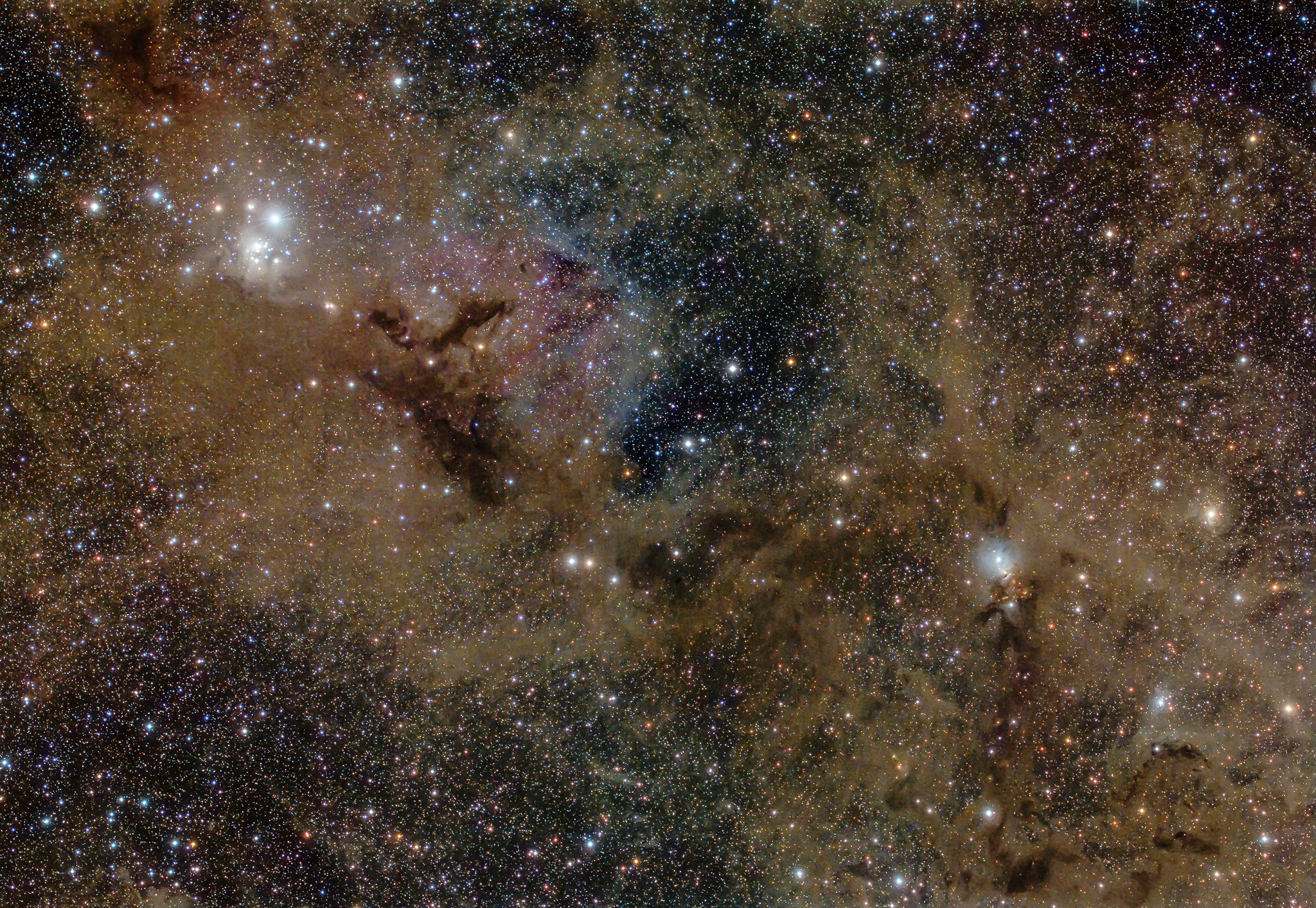
Copyright:Lynn Hilborn
原文:
This cosmic expanse of dust, gas, and stars covers some 6 degrees on the sky in the heroic constellation Perseus. At upper left in the gorgeous skyscape is the intriguing young star cluster IC 348 and neighboring Flying Ghost Nebula. At right, another active star forming region NGC 1333 is connected by dark and dusty tendrils on the outskirts of the giant Perseus Molecular Cloud, about 850 light-years away. Other dusty nebulae are scattered around the field of view, along with the faint reddish glow of hydrogen gas. In fact, the cosmic dust tends to hide the newly formed stars and young stellar objects or protostars from prying optical telescopes. Collapsing due to self-gravity, the protostars form from the dense cores embedded in the dusty molecular cloud. At the molecular cloud’s estimated distance, this field of view would span almost 90 light-years.
中文翻譯:
在這廣闊的宇宙中,漫天的塵埃、氣體和恆星在英雄星座佩爾修斯(Perseus)上覆蓋了約6度的天空。在美麗的天幕左上角,是令人著迷的年輕星團IC 348和鄰近的飛行鬼星雲(Flying Ghost Nebula)。右側則是另一個活躍的星際形成區域NGC 1333,兩者以暗而多塵的觸手相連,位於巨大的佩爾修斯分子雲(Perseus Molecular Cloud)邊緣,距離我們約850光年。這片視野中還散布著其他多塵的星雲,伴隨著微弱的紅色氫氣光輝。事實上,宇宙的塵埃常常使新形成的恆星和年輕恆星物體(protostars)不易被光學望遠鏡觀察到。這些原恆星是由位於多塵分子雲中的密集核心因自引力而 collapsing 所形成的。在這分子雲估算的距離下,這片視野的寬度將達到近90光年。
#宇宙探索 #佩爾修斯 #IC348 #飛行鬼星雲 #NGC1333 #星際形成 #分子雲 #美麗宇宙 #恆星誕生 #天文 #天文學 #星空觀賞
來源:NASA每日圖片


